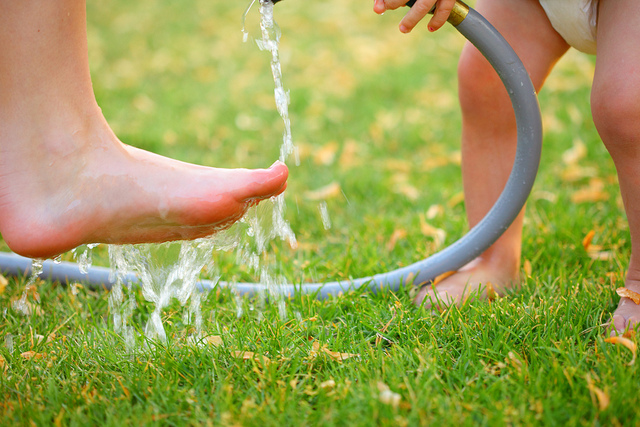This is a guest post from the Environmental Protection Agency. With temperatures soaring across the country, it’s expected that Americans will up their usage of water to about 1000-3000 gallons a day over the next few weeks.
Here in the U.S. we are in the midst of the worst drought since the 1950’s. This summer’s heat wave is expected to result in a serious spike in the amount of water being used outdoors this year. Late July and early August are usually when outdoor water use soars in most of the U.S., but some regions report overwatering well into the fall. And if steps aren’t taken to make water use more efficient, communities will face major challenges managing droughts and depletion of freshwater resources.
The EPA has published these facts about summertime overwatering, and the top 8 tips to save water this summer.
Three Facts about Summertime Overwatering
- Depending on the region, homeowners use between 30 and 70 percent of their water outdoors.
- Experts estimate that 50 percent of the water we use outdoors goes to waste from evaporation, wind, or runoff due to overwatering.
- The average American home uses about 260 gallons of water per day. During the hotter months, homes can use about 1,000 gallons of water a day. Some use as much as 3,000 gallons per day, or the equivalent of leaving a garden hose running for nearly eight hours!
Top 8 Tips for Saving Water Outdoors
1. Timing is everything: Know how much water your landscape actually needs before you set your sprinkler. Your local utility or garden center can recommend how much water certain plants need in your region and best times to water. It’s best to water lawns and landscapes in the early morning and late evening because large amounts of water can be lost due to evaporation during the heat of the day.
2. Look for the label: If your irrigation system uses a clock timer, consider upgrading to a WaterSense labeled controller. WaterSense labeled irrigation controllers act like a thermostat for your lawn, using local weather data to determine when and how much to water, which reduces waste and improves plant health! Learn more at www.epa.gov/watersense/products/controltech.html [2]
3. Go with a pro: Contractors certified through a WaterSense labeled program can audit, install, or maintain home irrigation systems to ensure water isn’t wasted. Make sure you ask for credentials.
4. Tune up your system: Inspect irrigation systems and check for leaks and broken or clogged sprinkler heads. Fix sprinkler heads that are broken or spraying on the sidewalk, street, or driveway.
5. Play zone defense: When planting, assign areas of your landscape to different hydrozones depending on sun/shade exposure, soil and plant types, and type of sprinklers, then adjust your irrigation system or watering schedule based on those zones’ specific needs. This helps you avoid overwatering some areas or underwatering others.
Even if your home doesn’t have a sprinkler/irrigation system, there are a number of simple steps you can take to promote a healthier lawn and garden with less water this summer:
6. Step on it: Grass doesn’t always need water just because it’s hot out. Step on the lawn, and if the grass springs back, it doesn’t need water. An inexpensive soil moisture sensor can also show the amount of moisture at the plant’s roots and discourage overwatering.
7. Leave it long: Raise your lawn mower blade. Longer grass promotes deeper root growth, resulting in a more drought-resistant lawn, reduced evaporation, and fewer weeds.
8. Give your hose a break: Sweep driveways, sidewalks, and steps rather than hosing them off. And don’t forget to check for leaks at your spigot connection and tighten as necessary.
For more tips on reducing outdoor water use, visit www.epa.gov/watersense/outdoor [3]
How do you save water during the hot summer months?
[Photo used under Creative Commons from Pink Sherbert Photography/Flickr]
